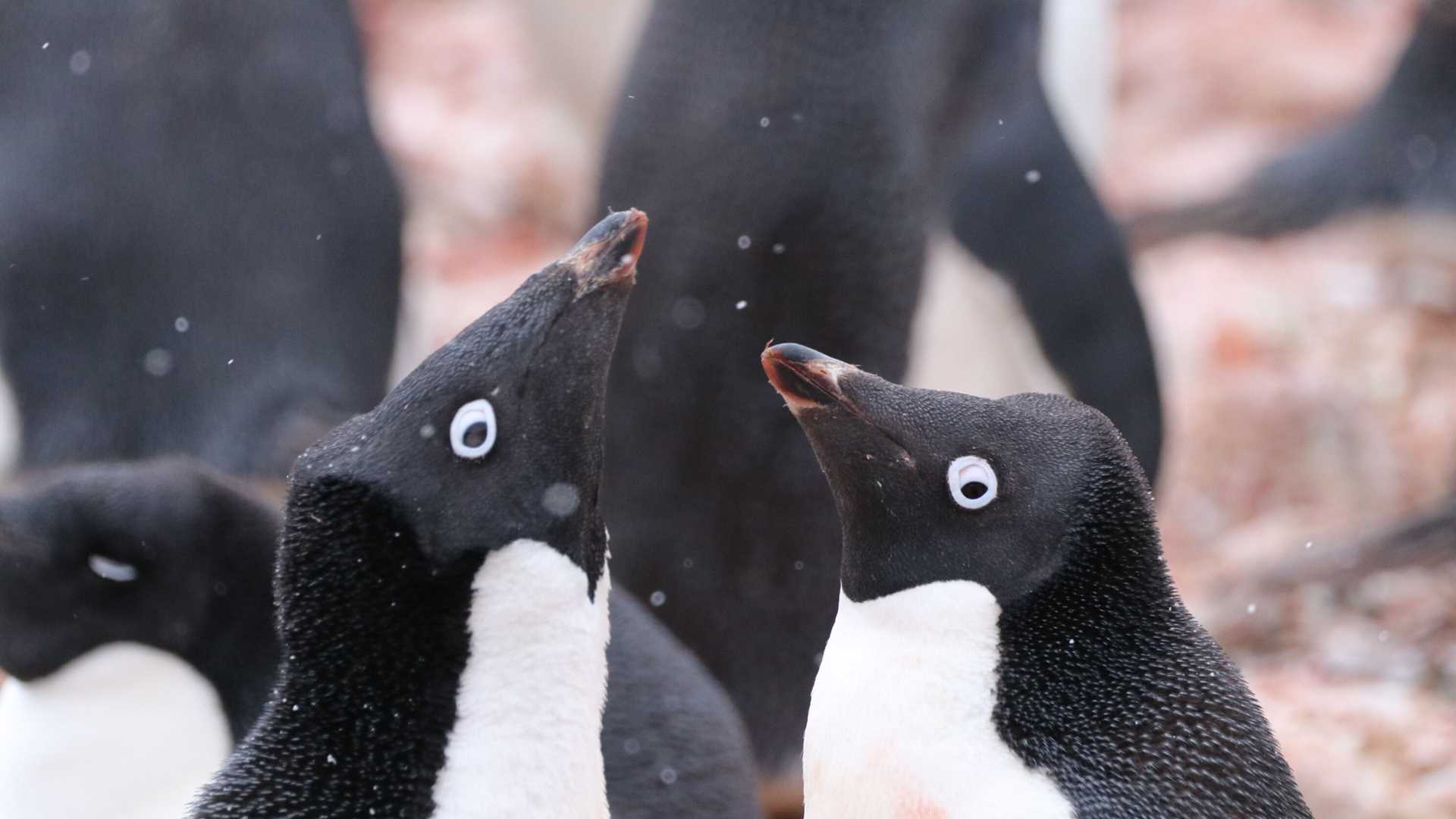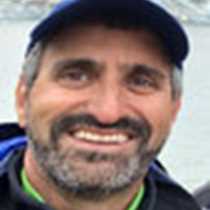Adelie penguins highlighted our day today on the eastern side of the Antarctic Peninsula. On a continental landing at Brown Bluff, these smart-looking, tuxedoed, krill-processing polar penguins made their presence known – crowded onto intimate Paulet Island, on nests, lined up by the shore, on penguin highways, in the water, on icebergs, on floes with seals, interspersed with humpback whales. They were everywhere, it seemed!
Penguins don’t fly but they do porpoise, propelling themselves alternately through water and up through less dense air, to move fast and elude predation by leopard seals. One Adelie we observed wasn’t so lucky. Another Adelie, all of a sudden, found itself momentarily out of the water and on the deck of one of our Zodiacs, much to the awe of our guests.
Adelies are the fifth penguin species of our voyage so far, while other, more flighted avians made appearances today, including checker-backed Cape petrels, the iconic and pure-white snow petrels, and water-tapdancing storm petrels, as well as those dependable penguin colony predators, brown skuas, kelp gulls, and southern giant petrels.
We transited from Brown Bluff to Paulet into the mystic of vast icy Antarctic scenes of tabular icebergs, ice-covered islands, smooth sea surfaces, and atmospheric skies. Humpback whales huffed and puffed and arched and dove repeatedly, while Adelie penguins rafted, preened, dove, porpoised, and perched on ice. Long skeins of Antarctic shags (blue-eyed polar cormorants) crossed the background as the whales fluked between penguins.
Paulet Island was one of Ernest Shackleton’s intended landfalls until the ice that famously beset and crushed his ship, Endurance, carrying his party too far to the east and north. Earlier, another intrepid explorer, Carl Anton Larsen, and his men did find shelter on Paulet after walking over the ice from the site where their ship, Antarctic, was taken by the ice. They built a slate hut and stockpiled Adelie penguins to survive the winter in this harsh environment. We walked up to Larsen’s hut, which still stands 120 years later. We were amazed by the sounds, smells, sights, and buzz of activity of the 100,000 Adelie penguins that take over Paulet every southern summer.
Larsen returned the following year to establish the first Antarctic whaling station, setting off a cascading disruption in the food web and freeing up krill for Adelie penguins and other species by removing an enormous amount of baleen whale biomass. Today, climate change, diminishing sea ice, and patchier availability of krill appear to be having negative effects on the region’s Adelie populations.







